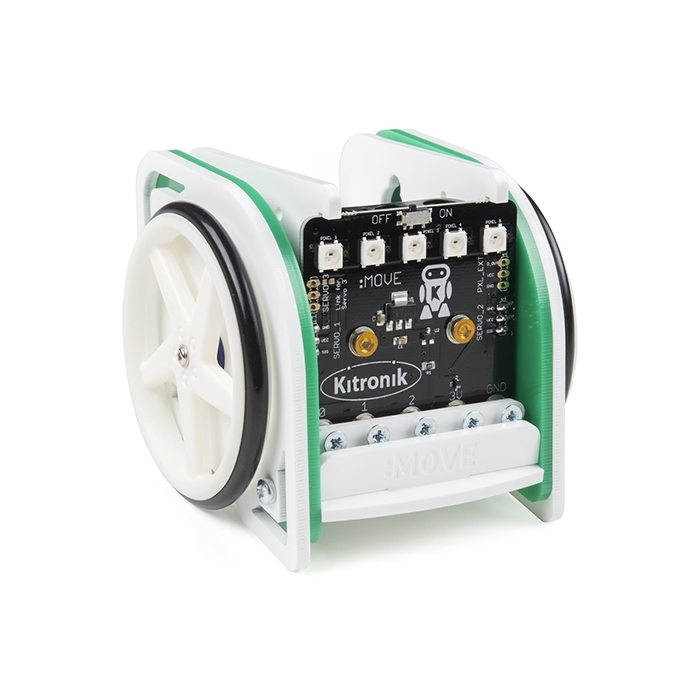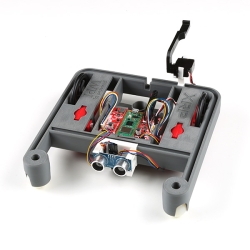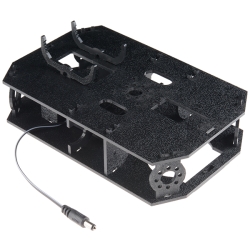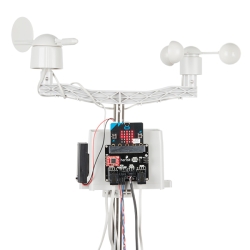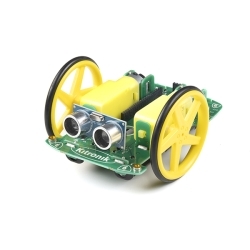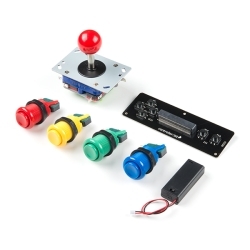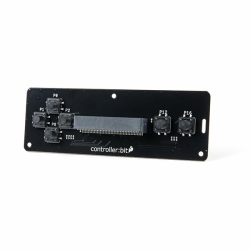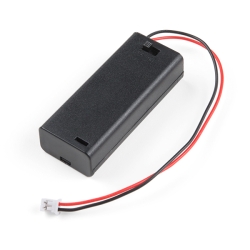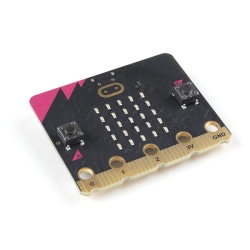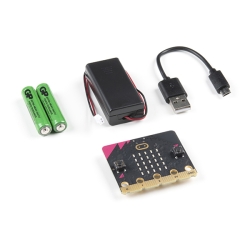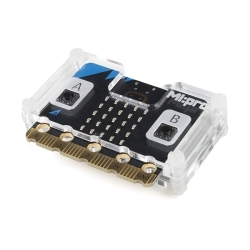Kitronik :MOVE mini MK2 buggy kit
The :MOVE mini MK2 Buggy Kit from Kitronik provides a fun introduction to robotics using the micro:bit.
Product Overview
The Kitronik :MOVE mini MK 2 buggy kit for the BBC micro:bit is the latest version of the ever popular :MOVE mini that provides a fun introduction to robotics. The :MOVE mini is a 2 wheeled robot that is suitable for autonomous operation, remote control projects via a Bluetooth application or being controlled using a second BBC microbit as a controller via the microbits radio functionality.
The MK2 features a brand new set of Kitronik injection moulded wheels with 0-ring rubber tires. The wheels maintain the large size, relative to the chassis, and add improved traction for better performance than the original buggies laser cut wheels. MK2 goes where V1.0 could not!
The Kitronik :MOVE mini is powered by two continuous rotation servo motors. The speed of these servo’s can be controlled by simply altering the PWM (Pulse Width Modulation) signal to the servo, which is easy to do using the Servo blocks in the Microsoft PXT Block editor. We have also produced Kitronik custom blocks for the Servo:Lite to make the task of coding as quick and painless as possible.
The buggy also has 5 x RGB individually addressable ZIP LEDs (NeoPixel compatible), which can be used as indicators, reverse lights etc...
It is possible to add a pen or other extra parts to the kit to increase the range of tasks for which it can be used. The BBC micro:bit is sold separately and the kit requires simple assembly, buy the microbit here.
The included Kitronik :MOVE servo:lite board can also be used in conjunction with a BBC micro:bit to build other movement based projects. We've produced a wide range of tutorials and guides that can be found in the resources section below. We have guides detailing; how to control a third servo, how to code the buggy to draw shapes, how to write code for the on-board ZIP LEDs, how to code the buggy for Bluetooth control and how to use a second microbit as a controller.
Note: The :Move Mini Buggy does NOT include a micro:bit board. The micro:bit board will need to be purchased separately. Additionally, this kit does require an intermediate level of construction, so make sure to read the assembly instructions fully!
Features & Specs
- The kit offers a fun introduction to the world of DIY robotics.
- Add code for autonomous operation.
- Use in conjunction with our free micro:bit Android App and control it over Bluetooth.
- Use the radio function and a second microbit as a controller.
- Attach a pen and code the robot to draw shapes.
- The buggy features new and improved injection moulded wheels with rubber 0-ring tires.
Documentation
- Assembly Guide
- Servo:Lite Datasheet
- WS2812B Datasheet
- Guide For Kitronik Custom MakeCode Editor Servo Blocks
- Getting Started With The Servo:Lite Board
- Guide For Controlling 3 Servos With The Servo:Lite Board
- Guide For Using Kitronik ZIP LEDs With The BBC micro:bit
- Guide For Controlling :MOVE mini With The micro:bit Radio
- Guide For Adding Bluetooth Remote Control To :MOVE mini
- Guide To Drawing With The :MOVE mini For The micro:bit
- Guide For Automatic Headlights For :MOVE mini
- Guide For Coding Indicators On The :MOVE mini
Customer Reviews


